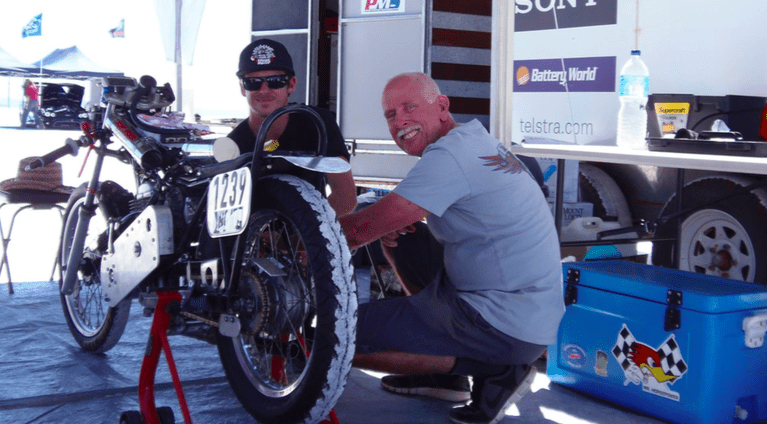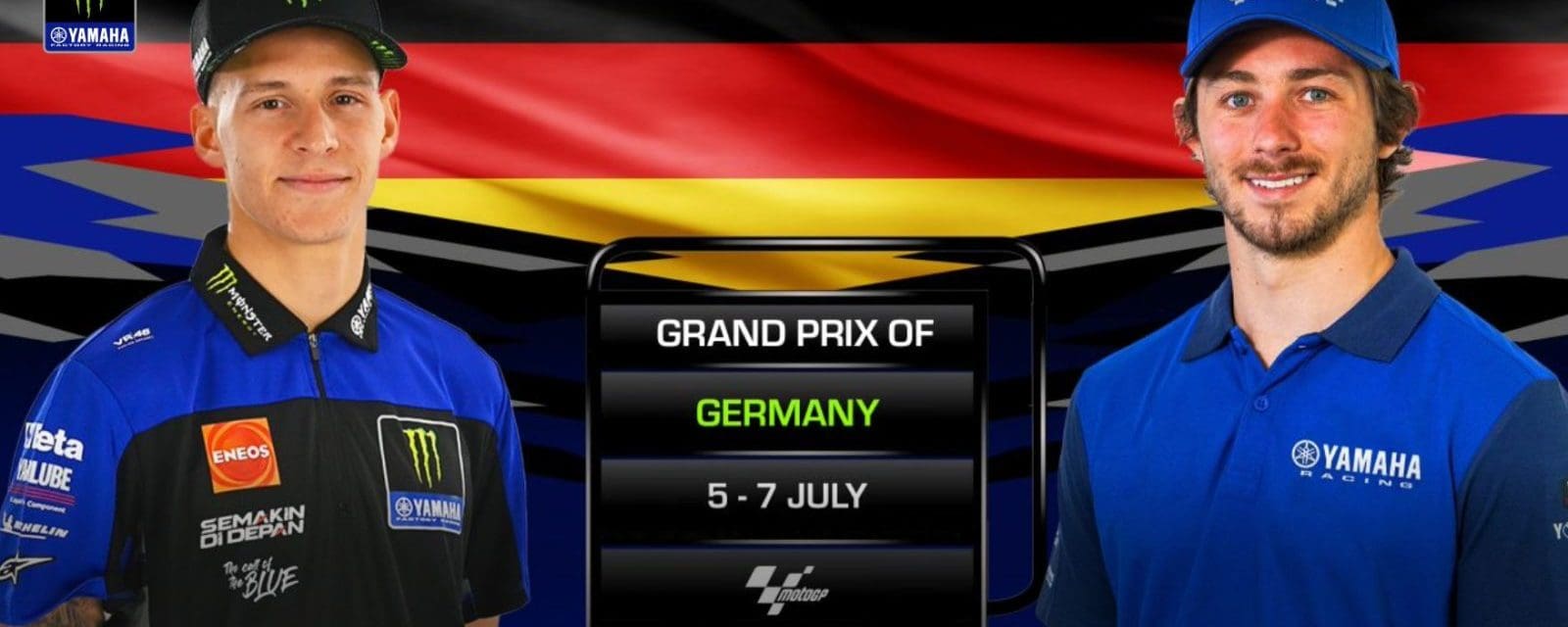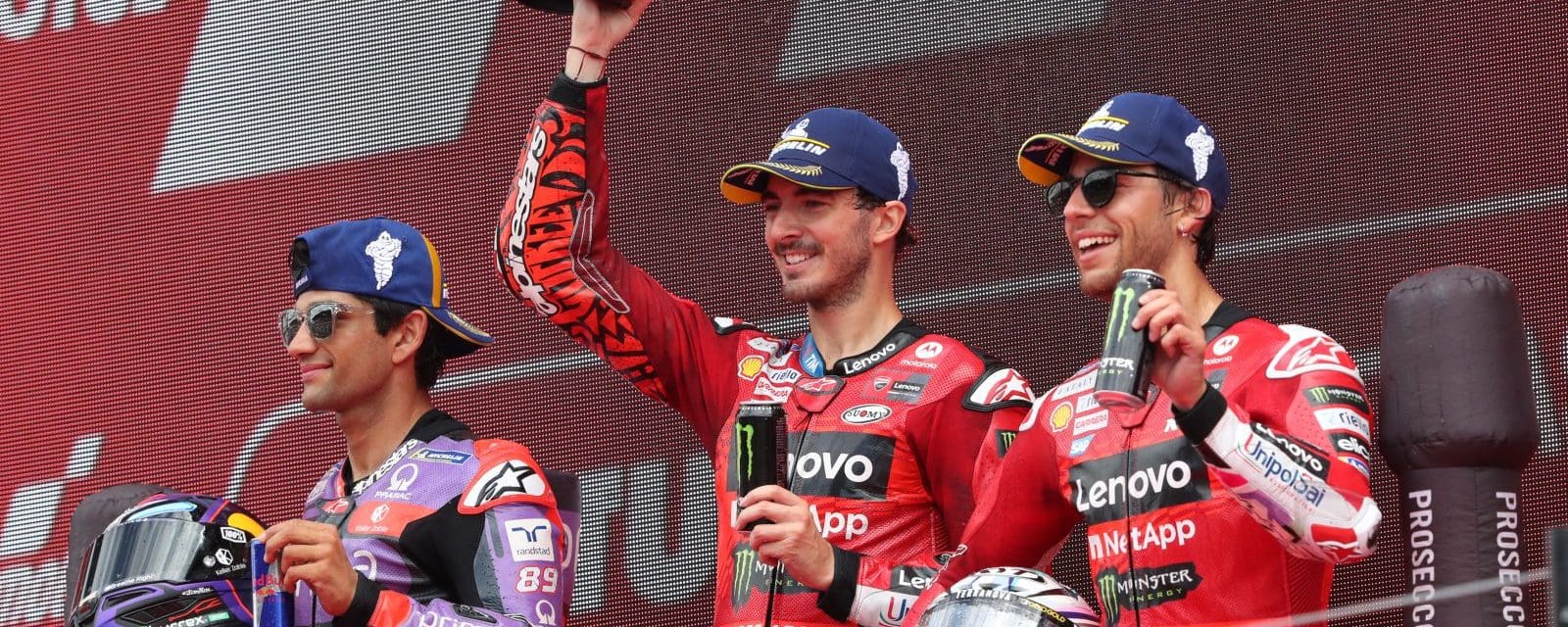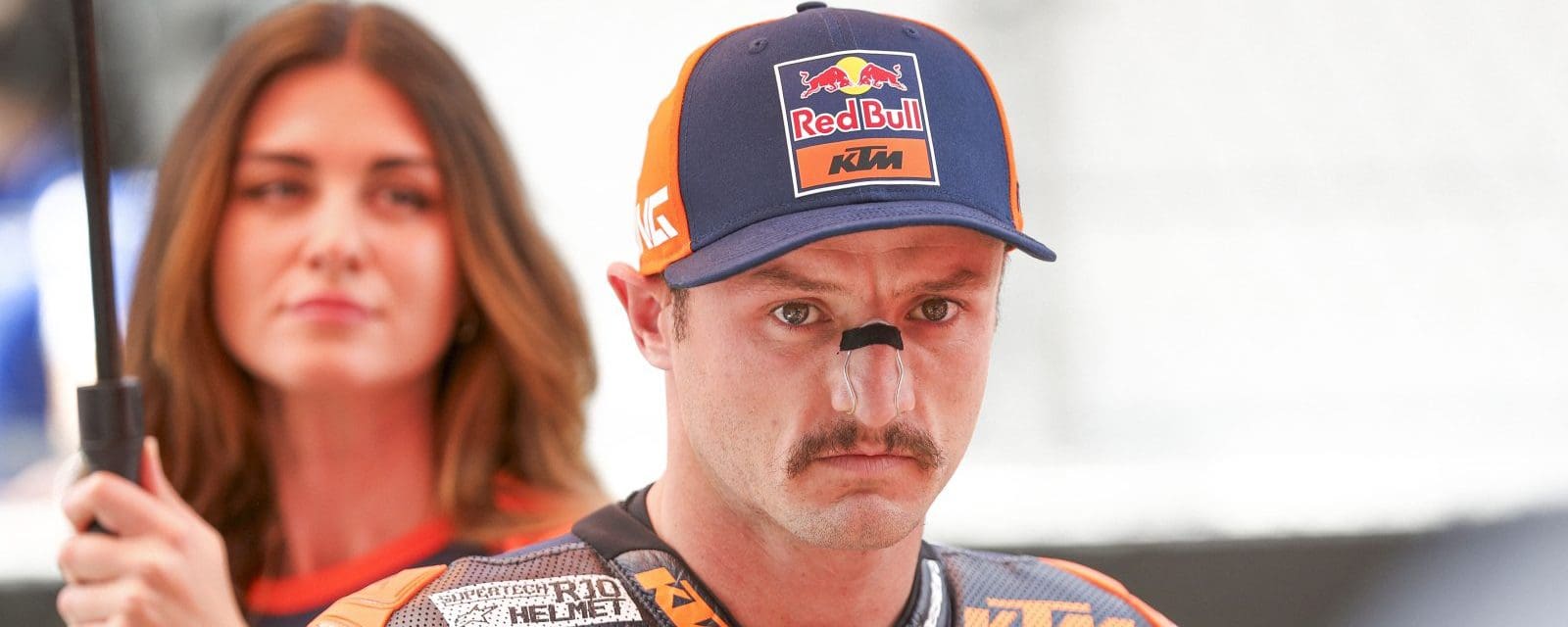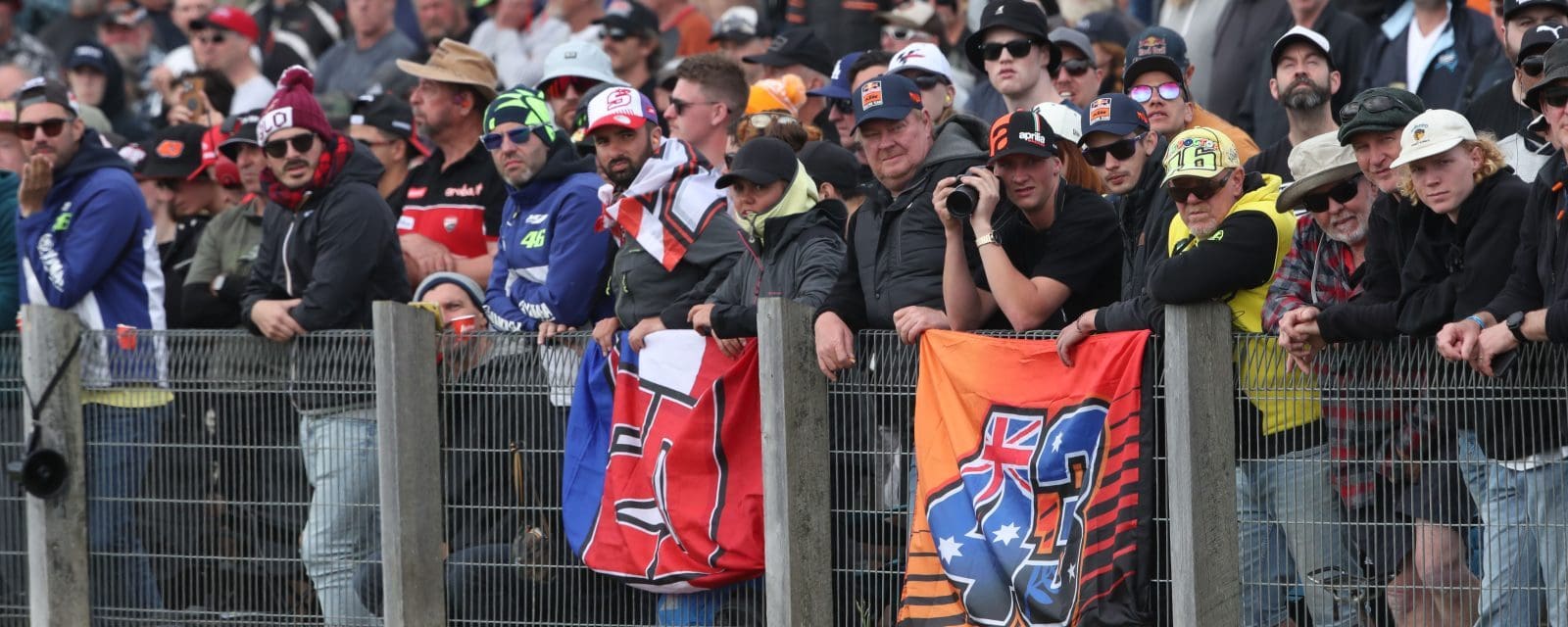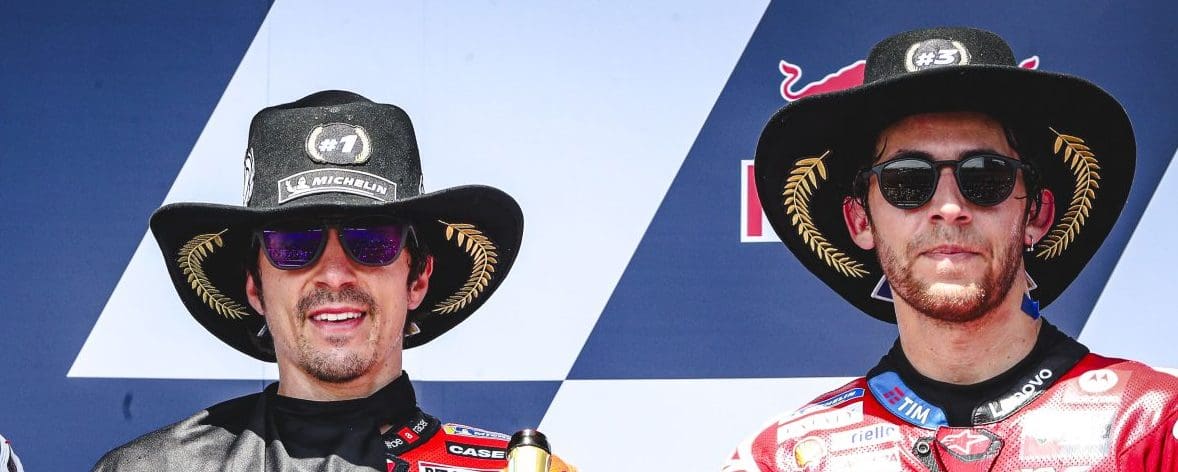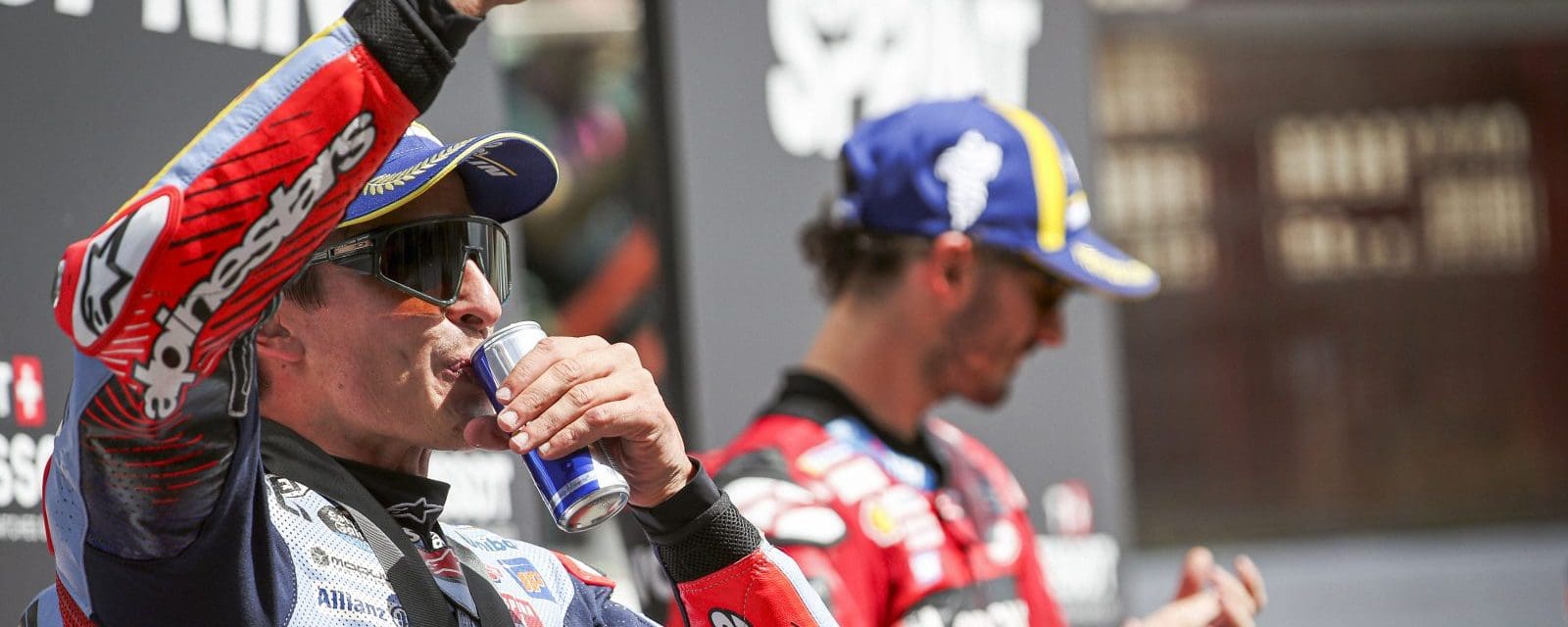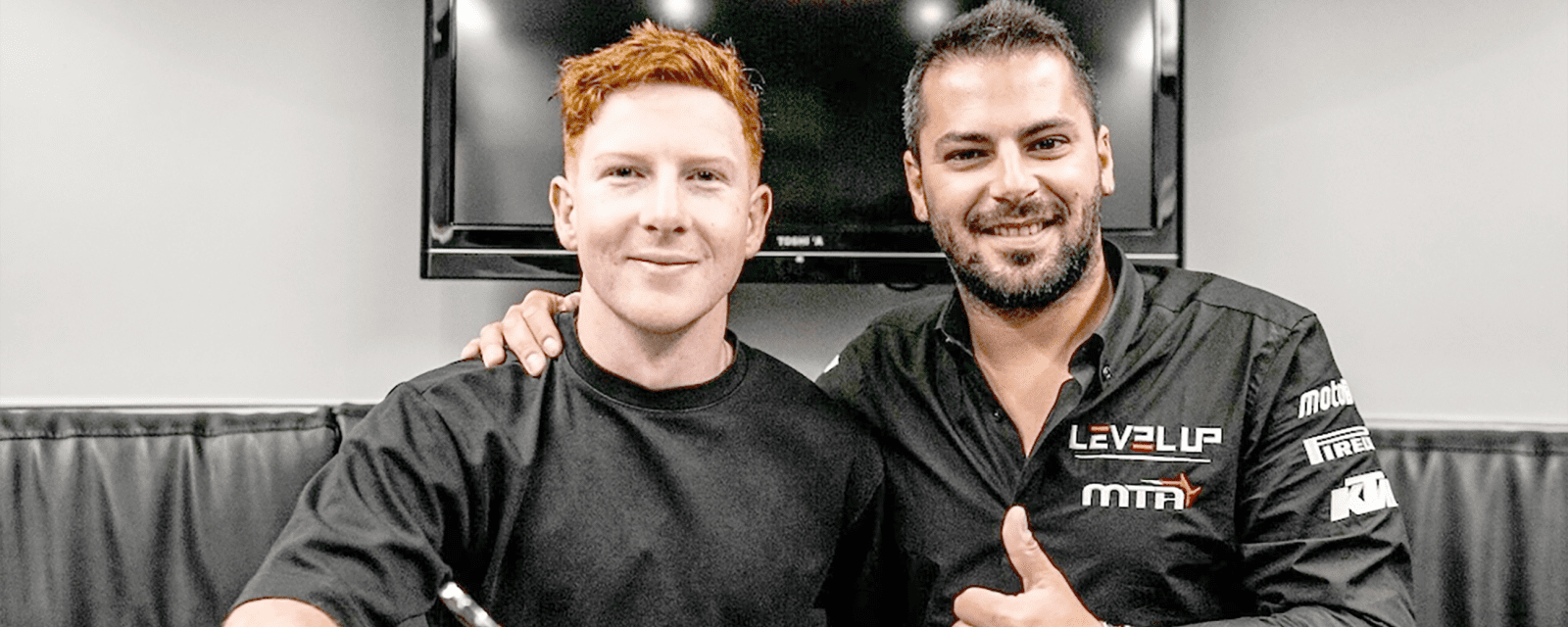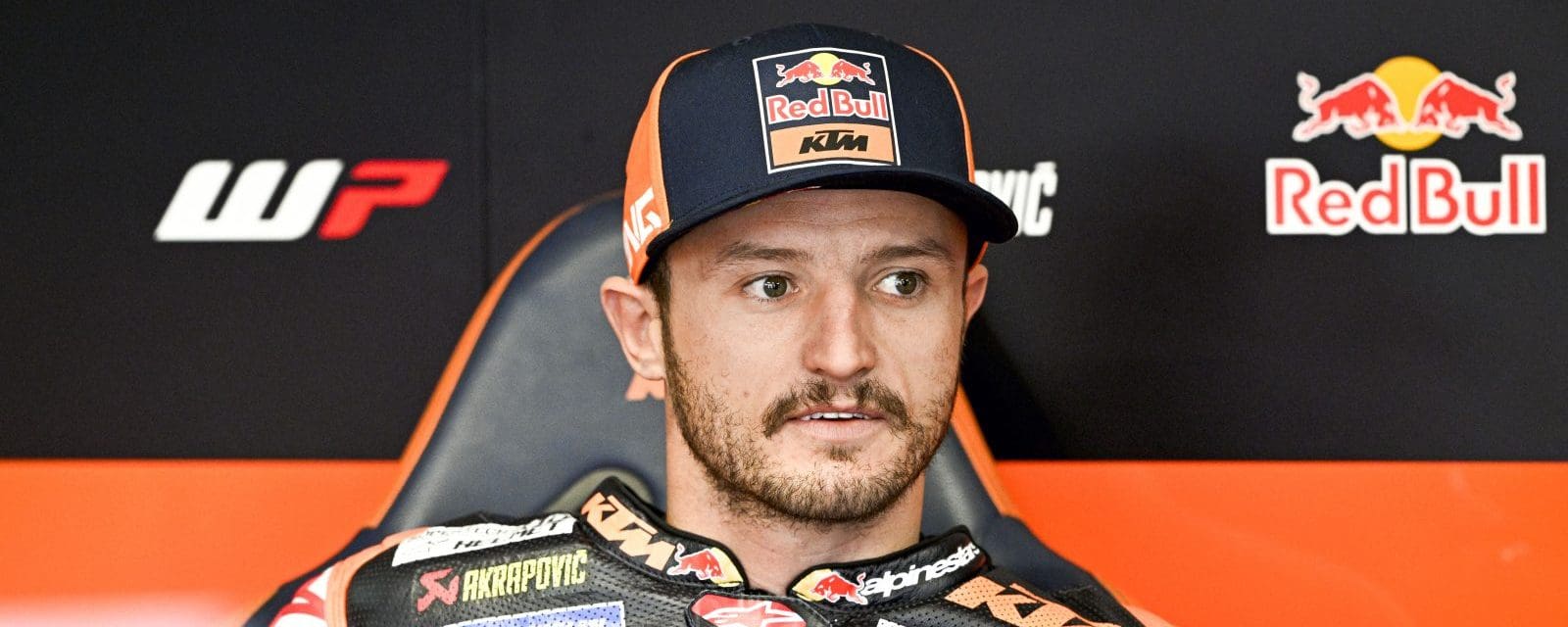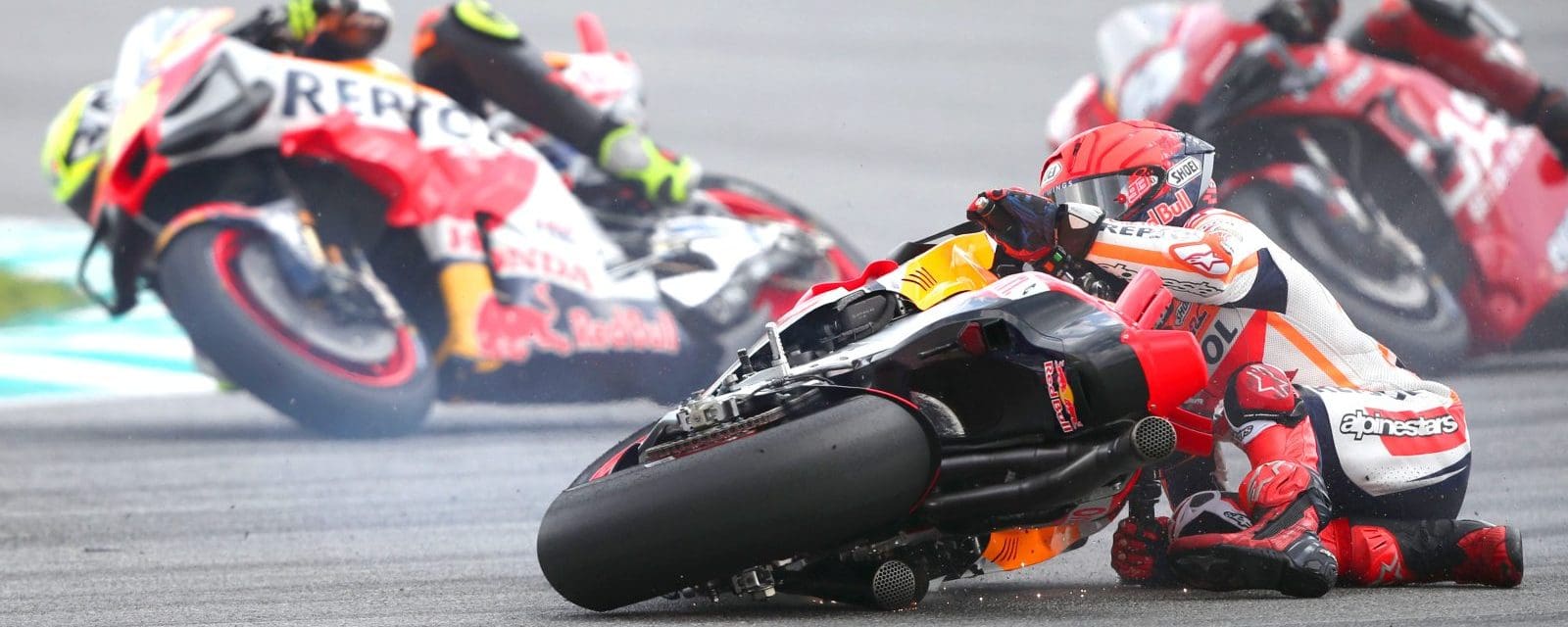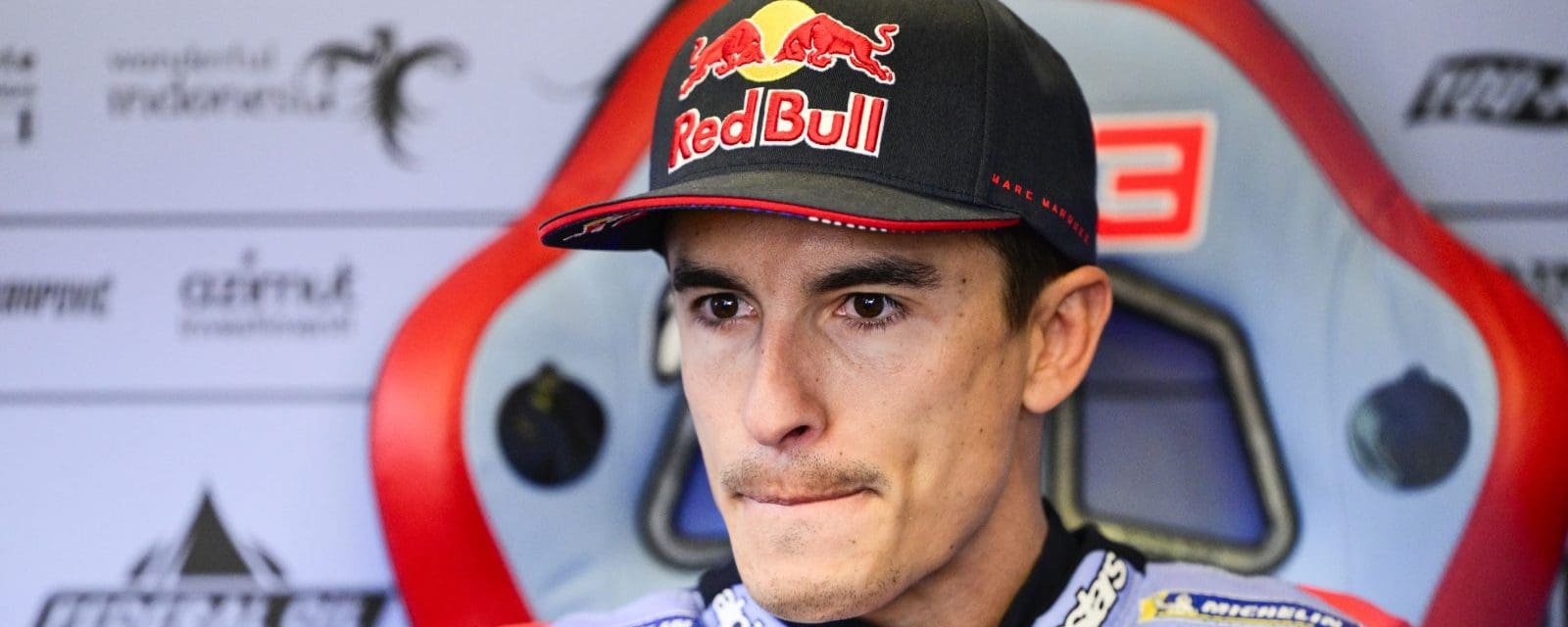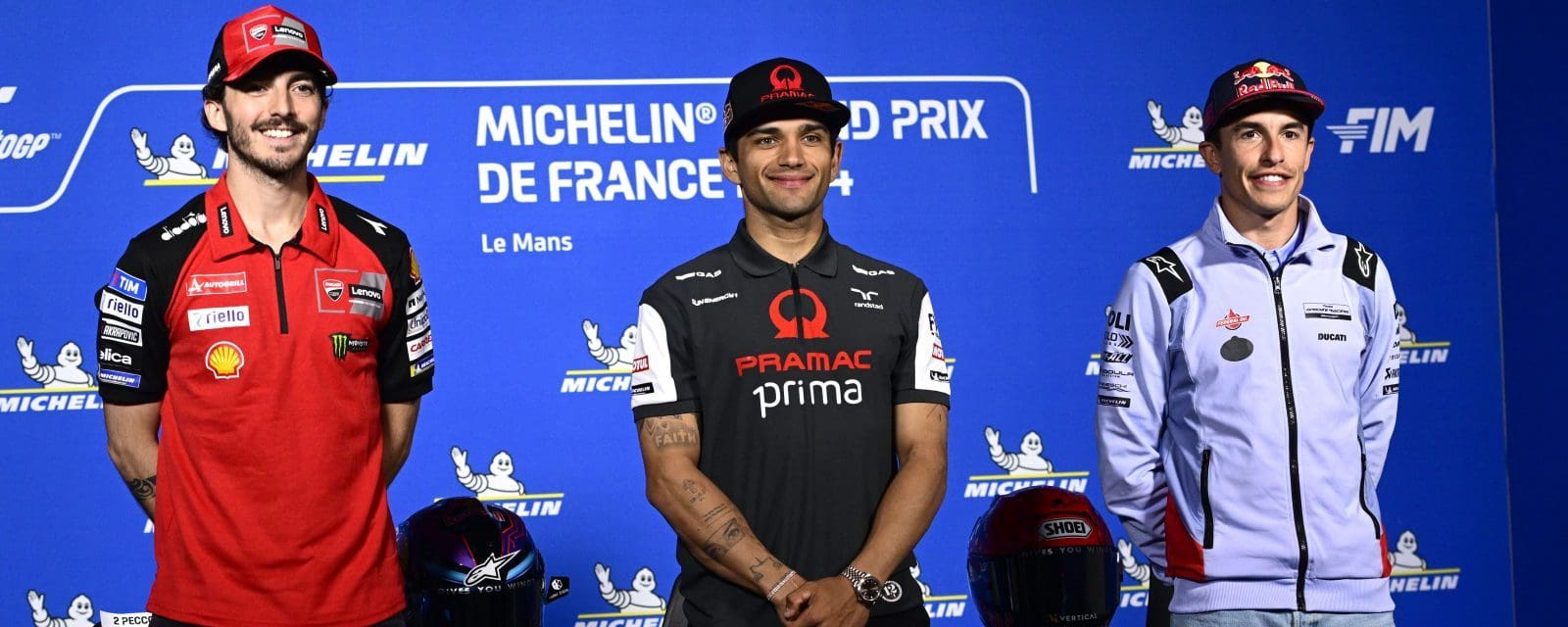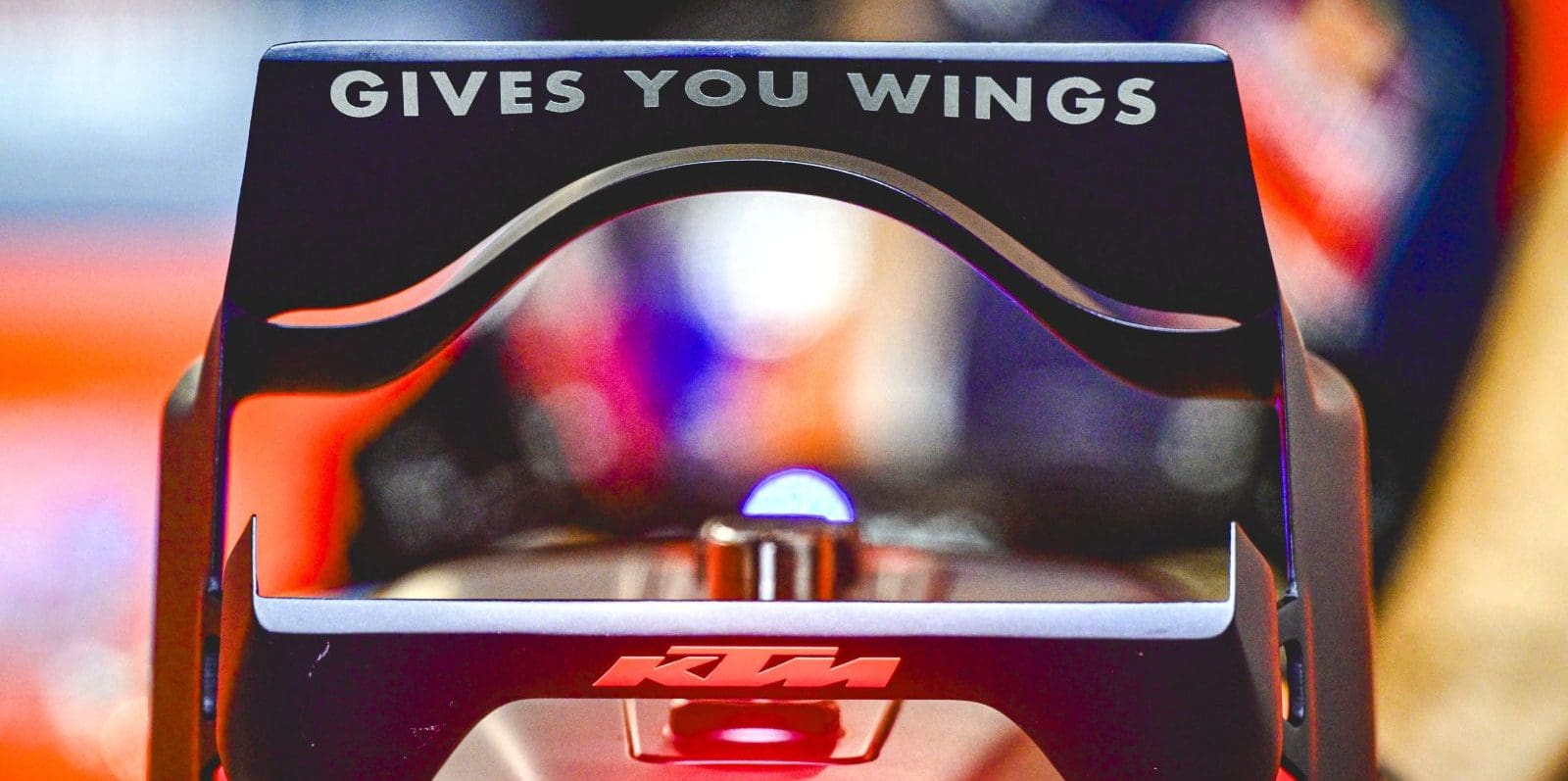Among the throng of speed junkies at this year’s Speed Week held 13-18 August was Jean-Paul Afflick and his dedicated Aussie/American AAA Land Speed Racing crew. Afflick had travelled all the way from the Northern Rivers region of NSW with his eyes fixed firmly on the 108.68mph record for the 100cc class.
“Heading to Bonneville Speed Week our goal was to be the fastest 100cc motorcycle ever. We ran 116.2mph at the Australian Speed Week at Lake Gairdner just a few months ago, so we knew we were in with a good shot of resetting the record,” says Afflick. “At Bonneville you need to run the record twice to make it stand, so even though we had already gone faster than the record, it was yet to be an official two-way run.
“But breaking the record at Bonneville was not simply a case of running the same setting as we did on Lake Gairdner. At 1286 metres above sea level, the thin air can hurt horsepower. Many legends had gone before us and struggled with the conditions. Famous racer, and the owner of the Bub 7 streamliner, Denis Manning, once said ‘lots of people come to the salt with 200hp, not many leave with 200hp’.”

Ambient temperature also plays a major role in power output of the highly tuned engines. The cool and dense morning air thins out as the day wears on and the temperature increases. Teams use a corrected altitude range to help calculate air pressure. The warm weather at Bonneville meant the teams were working within a 1700-2750m altitude range, not the actual 1286m geographical location of Bonneville.
“On a 35º afternoon, we were running at a corrected altitude of nearly 9000ft [2750m], that’s a 17 per cent loss in air pressure from the morning run when the corrected altitude was 5700ft [1737m]. Compare that to the 100 per cent density we ran at Lake Gairdner, and we were losing five per cent power. To compensate for this, we added a bigger dose of nitro to the fuel to get some cylinder pressure back and hopefully make the horsepower needed.”
Afflick was determined to make up for the disappointment of his 2015 record attempt when the team travelled all the way to Bonneville only to have the conditions deny them a chance. This time the team put in 11 solid runs and was kept busy with two motor tear-downs for measuring and sealing, and an engine swap. Riding a rigid frame bike on the rough course also threw up unexpected challenges.
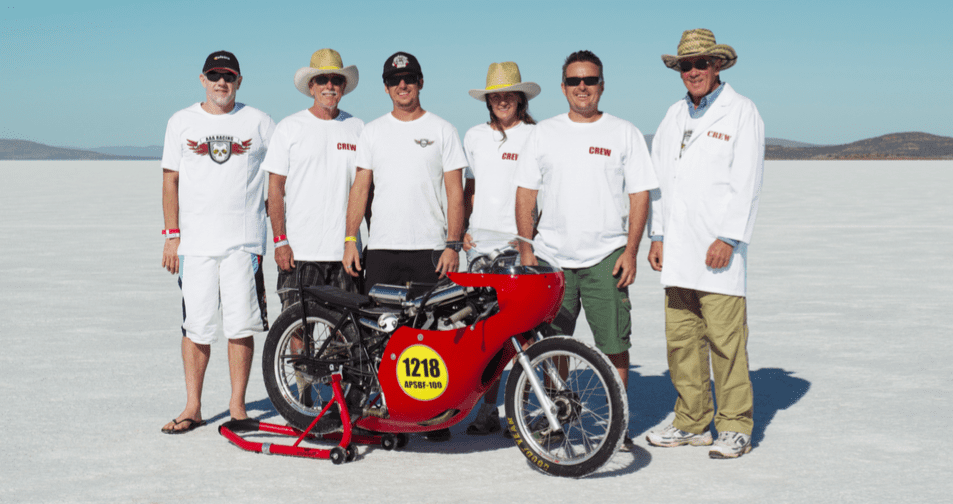
“The surface was very poor. The rookie track was so rough my dad said to me that he didn’t mind if I did not run. Out of 11 runs, I only had one like we had in Australia where the track was dead smooth. The rest of the week it was average. We let the tyres down from 40 to 30psi, but I struggled to get aero – I was just concentrating on hanging on to the bike.”
With an opening run of 92mph, the team knew the record was within reach, and as the week rolled on they gradually increased their official speed to 111.3mph before resetting the APSBF100 class record at 111.344mph – the fastest ever 100cc at Bonneville.
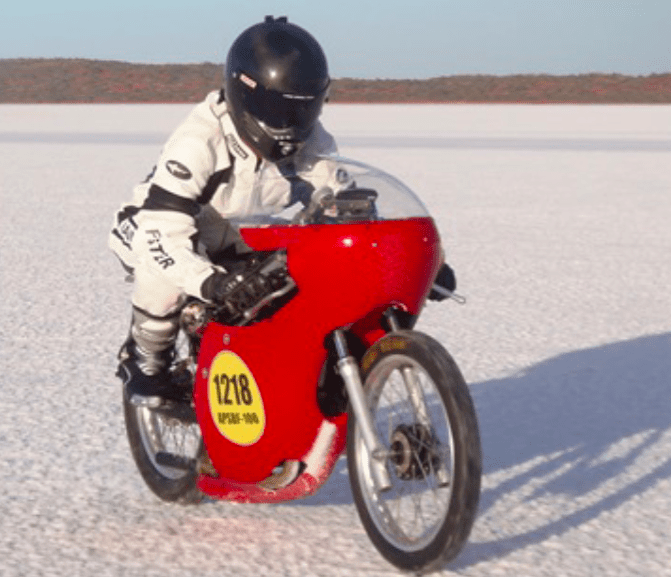
“To get the record was a dream come true, not only for me but our team of Warren, Jo, Mitch, Paul and David. The Bonneville Salt Flats have such history and to be part of that is quite a humbling experience. I would like to thank my dad and Joanne who worked hard all week in extreme conditions. Also Hare & Forbes, Powerhouse Dyno, Minimob Racing, Top 1 Oil, Barnett Clutches, Amal Carbs, Kitaco Engineering and East Point Signs.”
World’s fastest CRF110 – Official!
It may be hard to recognise, but the AAA Land Speed Team machine ridden by Jean-Paul Afflick started life as a Honda CRF110. The frame, wheels and fork are all CRF kit with the rear shock removed, and frame made rigid.
Now with a 99cc capacity, the single-cylinder engine is fitted with a Kitaco SE PRO KIT consisting of a crank, barrel, piston and head. It’s now a short-stroke, big-bore engine measuring 39.1 x 57mm for its 99cc. The methanol fuel contains 30 per cent nitro methane, stuffed into the engine by an AMR 300 supercharger. In stock form, the CRF 110 generates 6.6kW; Jean-Paul’s record holder puts out 22.37kW at the rear wheel. Stripped down the bare bones, it tips the scales at 90kg.
At full noise it gulps 2.5 litres over a 5km run – that’s fuel economy of 50L per 100km!
The 17-inch front wheel is shod with a Goodyear Front Runner tyre taken from a Top Alcohol dragster, while the 16-inch rear has a Pirelli Sport Demon hoop.
The fairing is off a Kawasaki 1970-ish road racer, and the seat is a Harley XR750 Daytona seat.
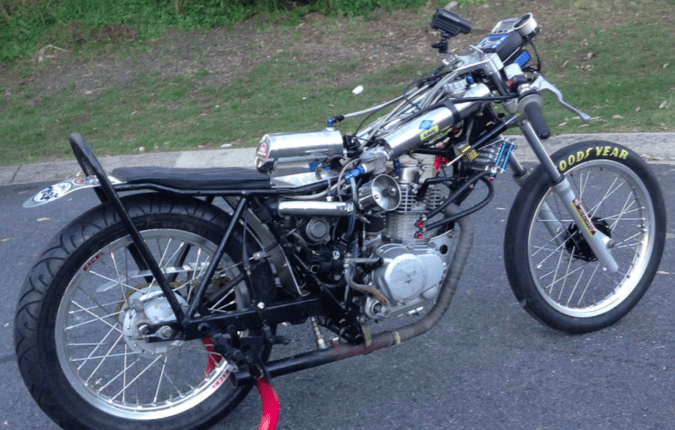
Road to the salt
Jean-Paul made his first visit to Bonneville in 2010, and over a burrito and beer decided he wanted to come back and have a crack. “What appealed to us was that you could build what you liked, no one class is all the same. If you have an idea you can try it. It’s the last place where ingenuity is still alive.”
The team returned to Bonneville in 2012 to again spectate. When they returned home they bought a bike, and their first run was at Lake Gairdner in March 2014 (left).
“I think that if you love motorcycle racing, then land-speed racing is the last place you can really tell how fast you are. The big white dyno takes no prisoners. It’s not a top speed event, you need to average the speed over a mile. That’s very hard on equipment; you are pushing the limit for a long time.”
